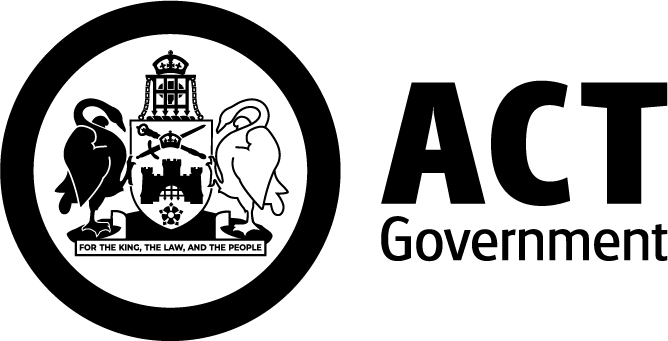The Audience Outlook Monitor is an international study tracking how audiences feel about attending arts and culture events. The research provides insight into the trends shaping audiences today, including the cost-of-living crisis, global uncertainty and the collective mood.
The research has been conducted annually since 2020. The data is a valuable resource for independent practitioners, organisations, business and researchers to support audience engagement activities and plans.
Key Findings
ACT Report - August 2023
This current ACT Snapshot Report outlines key findings from Phase 9 (August 2023) of the Audience Outlook Monitor in Australia, based on data collected from 324 audience members living in the ACT.
Attendance Behaviour: Attendance rates in the ACT continue to recover since the pandemic.
78% of ACT audiences said they had attended an in person cultural event in August 2023 slightly down from 81% in October 2022.
52% of ACT audiences attended a cultural venue or event at least once in August 2023, up from 19% in October 2022. This is significantly above the national average of 32%.
ACT audience recovery increased beyond 2019 levels by more than 30%.
Inflationary pressures and pricing: Financial barriers are impacting ACT audiences and what they can spend on events.
3 in 10 (29%) of ACT audiences were ‘prioritising other things,’ saying this is preventing them from attending arts and culture events.
26% of ACT audiences said the second highest barrier impacting their attendance was financial reasons which has dropped since October 2022 from 32%.
20% of ACT audiences are still noting the risk of contracting or transmitting the COVID-19 virus as a barrier to attending cultural venues and events. This has dropped significantly since October 2022 (45%).
Over half (58%) of those attending cultural venues and events in the ACT spent $50 or more on tickets to in-person live events and cultural activities, consistent with spending in October 2022 (56%).
37% of ACT audiences say they are financially ‘worse off’ while 57% say they are the ‘same’ as one year ago. Only 6% overall report that they are ‘better off’.
41% of ACT audiences said that due to their financial situation, they took longer to make decisions about what to go to over the past 6 months.
The desire to inspire: ACT audiences have a strong desire for a wide range of content
75% of ACT audiences were looking for fun, uplifting experiences, 63% of audiences likely to attend events with great reviews and 56% of audiences seek challenging and topical content.
53% say they’ll be drawn to things they haven’t experienced before suggesting some audiences may be taking less risks in the face of economic uncertainty.
Online Trends: ACT audiences continue to engage online.
76% of ACT audiences cited digital channels. The key channels included direct emails from arts organisations (46%) and websites (41%)
33% of ACT audiences are relying on word-of-mouth from friends, family, or colleagues making it the third most common channel.
ACT audiences are also using social media, such as Facebook (16%) and less so Instagram (5%) to find out about arts and cultural activities.
Among ACT audiences, 11% say online arts events/experiences play a substantial role (down from 19% in October 2022), and 43% say they play a small role (down from 55% in October 2022).
37% of ACT audiences are currently participating in online or digital arts and culture experiences, slightly below the national rate of 39%.
Two-thirds (67%) of ACT audiences reported not paying for any online arts and cultural experiences, consistent with October 2022 (68%). Amongst those paying, donations of gratitude were slightly up at 15% compared to 12% last year, and purchases of single experiences was down at 13% compared to 17% 2022. Smaller proportions subscribed to a platform to access content on-demand (8%) or subscribed to a program/season that included the experience (3%).
Late Decision Making: Last minute decision-making persists with ACT audiences having different motivations for the timing of their ticket purchases.
59% of ACT audiences are booking less than two weeks out, while 18% book on the day of the event. 26% booked in the week leading up to an event.
Last-minute bookers in the ACT typically hear about events via websites (46%) and word-of mouth (38%), while early bookers rely on emails (63%).
44% of audiences from the ACT are most likely to be booking last-minute, possibly linked to a higher frequency of gallery attendance in the ACT overall.
63% of early bookers in the ACT and 52% of mid-term bookers reported emails from arts organisations as a means of hearing about the event they attended recently.
Last-minute ticket buyers in the ACT were committing based on things they saw online (46%), but also due to word-of-mouth recommendations (38%), social media like Facebook (14%) and Instagram (4%), and traditional media channels like radio and TV (14%), or outdoor poster/signage (13%).
Subscriptions and Memberships
53% of ACT audiences are members or subscribers which is the highest percentage across all states.
Over half (53%) of ACT respondents reported having purchased season tickets or a membership to an organisation this year which is significantly higher than the national average of 41%.
In the ACT, museum and gallery memberships are the most common (39%) compared to performing arts subscriptions which are held by 24% of respondents.
1 in 2 ACT audiences (49%) said they would be ‘very likely’ (25%) or ‘likely’ (24%) to purchase a subscription or membership for next year.
Report
Download ACT Audience 2023+ Report (PDF 2.90MB)
About the Report
artsACT has collaborated with research agencies Patternmakers (Sydney) and WolfBrown (USA), and other government art agencies across Australia since 2020 in the international Audience Outlook Monitor research. Each phase of the project has involved a cross-sector collaborative survey process involving arts and culture organisations, including museums, galleries, performing arts organisations, and festivals.
For more information about the study, and to access resources such as the dashboard, visit the Patternmakers website.
